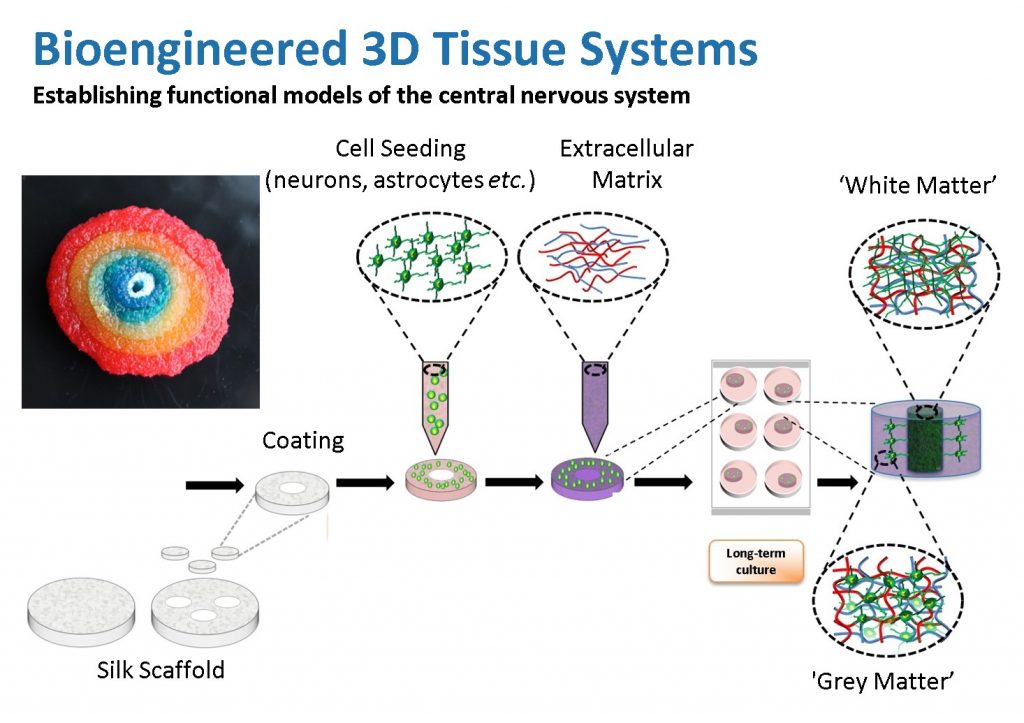The impact of brain dysfunction – brain-related disorders, disease, and damage – on human health and well-being is growing, yet our ability to diagnose, target, treat and repair/regenerate the brain remains extremely limited. The recent establishment by Tufts researchers of a bioengineered 3D brain tissue system for research and development has the potential to address this need and play a transformative role in neuroscience research, focusing on brain-related tissue bioengineering as a highly promising new platform for interrogating brain development, structure, and function, and for therapeutic discovery.

Our modular design comprises compartmentalized silk protein-based biomaterial scaffolds and collagen gels with neurons, astrocytes, microglia, and/or oligodendrocytes. This composite structure consists of a silk protein sponge superstructure (scaffold) infused with a softer gel (collagen). Layered architecture of the neocortex can be assembled with concentrically-shaped “donuts” with each layer corresponding to different cortical layers of the intact brain. A unit module consists of a surrounding spongy, grey matter-like scaffold region containing neurons and a gel, white matter-like center region containing exclusively axons in an extracellular matrix. In the porous scaffold region, the neurons form mini-networks composed of clusters with axons traversing the pores. Dense long axons emerge from the surrounding scaffold region and converge into a center region of axonal output. The system demonstrates dynamic 3D neuronal growth where neurons organized into clusters via surface preferred attachment, while the axons grew via gel-supported penetration and inter-connectivity. These 3D compartmentalized neuronal cultures with silk fibroin-based biomaterials offer tunable mechanical properties, versatile structural forms, and brain and neural culture compatibility. This brain-like tissue provides rudimentary but relevant features of brain neural networks.